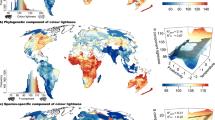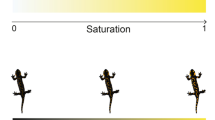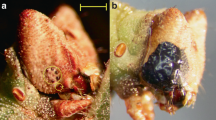Abstract
I AM pleased that my article should have aroused the interest of such a well–known authority on adaptative coloration as Prof. G. D. Hale Carpenter. Before answering in detail, I should like to deal with his first general protest. He objects to the word “frequently” in formulating a rule and calls this a “vague” statement. It is interesting in this context to quote from a letter which I received from Dr. B.P. Uvarov, of the Imperial Institute of Entomology, which he kindly permits me to use: criticizing the wording of these same rules he writes: “The dogmatic character of your rules … is the first weakness of your paper.” So I think I have on the whole kept well between extremes such as formulating rigid laws or merely making “suggestions for observation” as suggested in the letter quoted above.
This is a preview of subscription content, access via your institution
Access options
Subscribe to this journal
Receive 51 print issues and online access
$199.00 per year
only $3.90 per issue
Buy this article
- Purchase on Springer Link
- Instant access to full article PDF
Prices may be subject to local taxes which are calculated during checkout
Similar content being viewed by others
Author information
Authors and Affiliations
Rights and permissions
About this article
Cite this article
KALMUS, H. Physiology and Ecology of Cuticle Colour in Insects. Nature 148, 693–694 (1941). https://doi.org/10.1038/148693b0
Issue Date:
DOI: https://doi.org/10.1038/148693b0
Comments
By submitting a comment you agree to abide by our Terms and Community Guidelines. If you find something abusive or that does not comply with our terms or guidelines please flag it as inappropriate.



